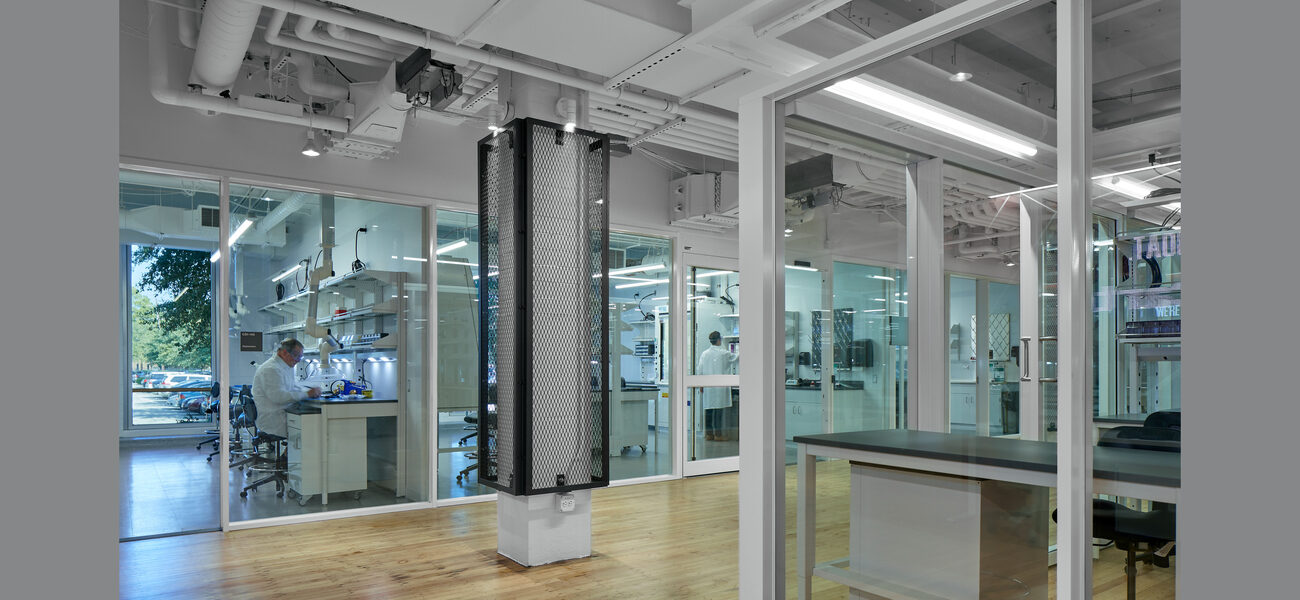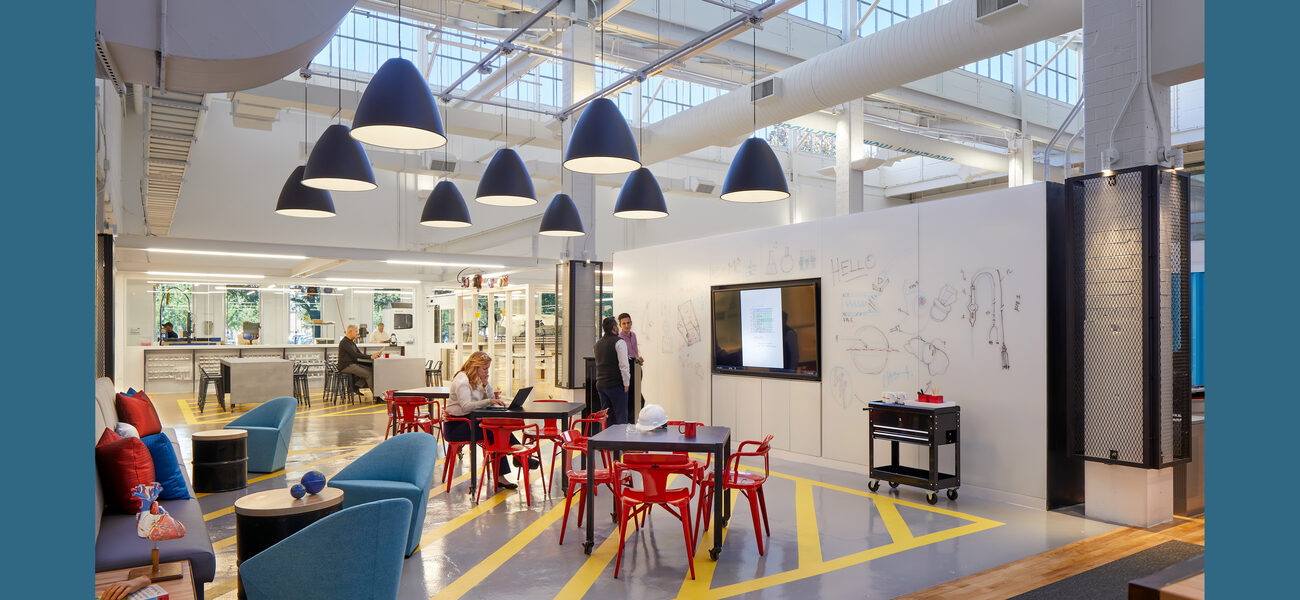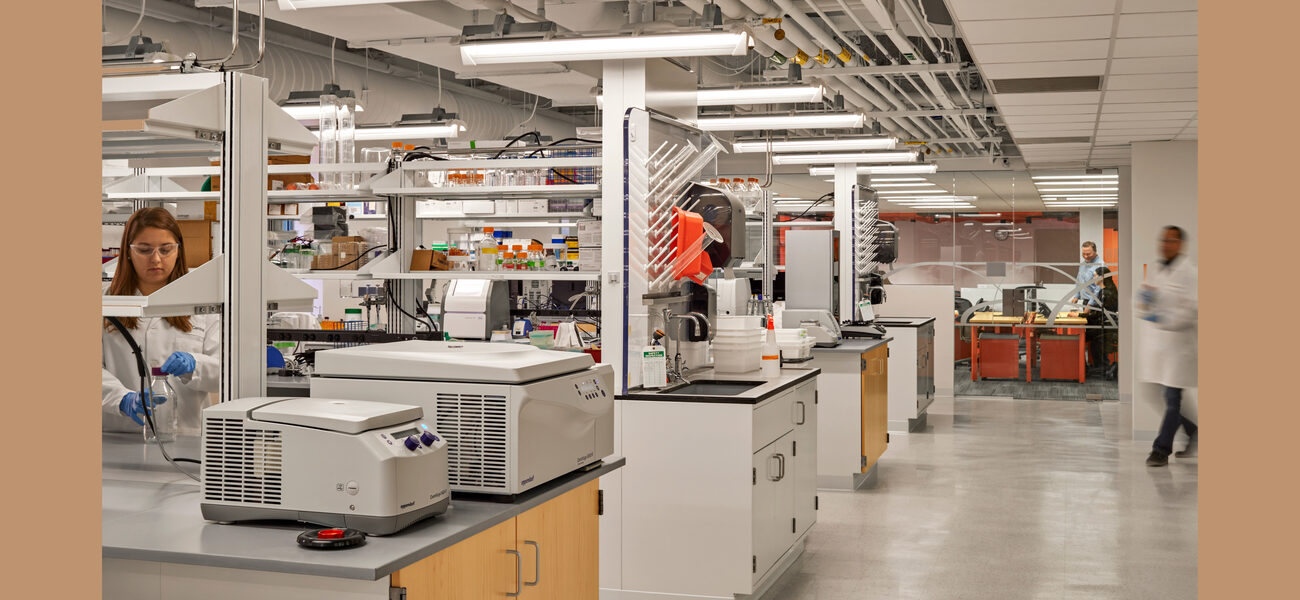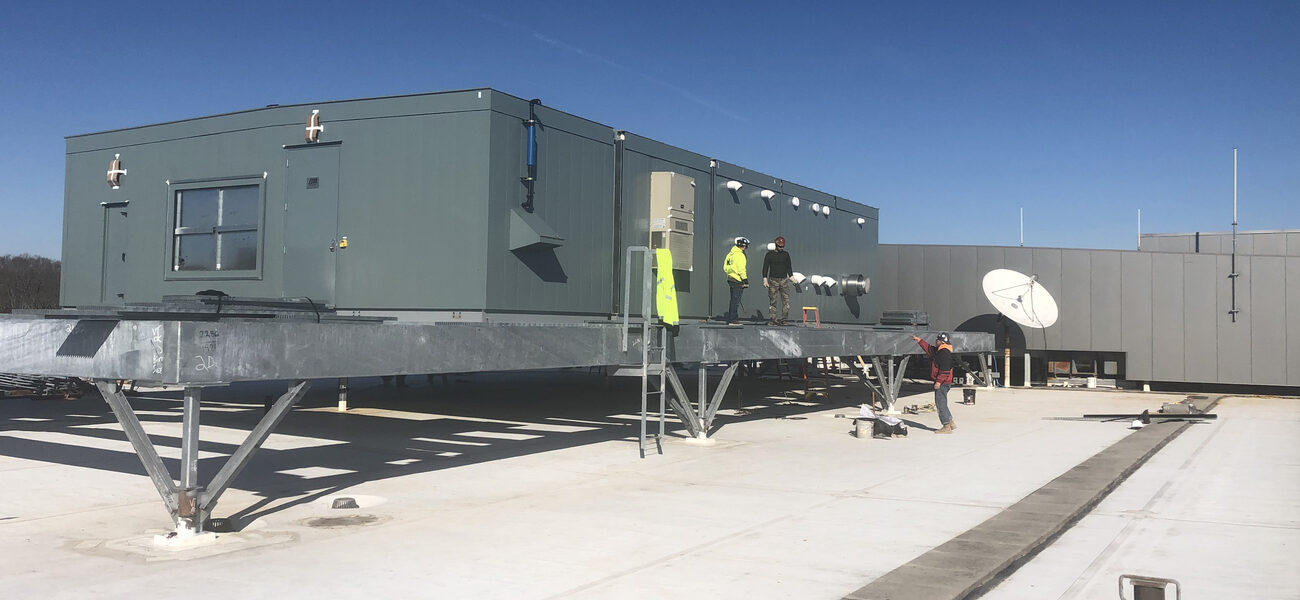The life sciences industry has become the great hope in real estate, as we face the most significant public health crisis in a century. While other industries have slowed and suffered as a result of sheltering in place and working from home, science facilities have remained operational and even have thrived in prime markets, as the industry continues to search for medical breakthroughs. The downturn in other industries has left buildings vacant. The life science market, on the other hand, continues to experience some of the lowest vacancy and highest employment rates. For life science organizations in the prime U.S. markets, there simply remains a shortage of available research-capable space. Enter the big pivot to science.
Like never before, the availability of non-science space, combined with the unprecedented demand for science, is driving building owners and developers alike to consider converting existing non-lab space into facilities that can support research and development activities.
While there is tremendous activity in the real estate market to reposition existing facilities into space for science, there is also a steep learning curve to develop quality facilities able to support the many varied science programs. The level of activity in the market, combined with the increased cost and complexity in constructing these highly technical facilities, creates significant development risk. The best way to reduce risk and achieve success is to work with experienced design and construction professionals to understand the unique project requirements and implement appropriate development strategies.
Do not underestimate the challenge. While most people-oriented office and collaboration spaces are similar, science programs vary widely; the room environments must respond directly to these programs; and the building systems must be designed to support the resulting performance requirements. In addition to supporting the extensive and highly sensitive analytical processes used in science, these building systems must also be designed to protect the health and safety of the occupants from the chemical and biological materials used. This makes the process to adaptively reuse these existing facilities for science both complex and potentially costly, and requires experienced design, engineering, and construction professionals to guide the conversion.
How is a Science Building Different?
There is no one-size-fits-all set of instructions to make the conversion to R&D. When evaluating the strategy to convert a building to science, it is critical to recognize that all existing buildings are unique, and each of the many types of science facilities and user organizations are also unique. Ranging from basic biology and chemistry to bioinformatics, clinical research, food science, physical science, engineering, and cGMP process manufacturing, each of these science programs requires a specific response to align existing facilities with specialized requirements.
A detailed facilities assessment of the existing building—combined with a comprehensive basis of design for the programmatic space, indoor environmental conditions, and equipment needs—will establish a gap analysis along with a set of requirements to be achieved in order for the facility to support the new science use.
Longer Schedules
Starting with an existing structure is much faster than starting with new construction, as the primary building elements are already in place. However, science facilities take longer to design and construct than typical office workspace due to the complexity of the new HVAC ventilation equipment and distribution systems, normal and standby electrical equipment and distribution, and process utilities systems requirements. Scientific equipment needs to be carefully coordinated with the space and utilities, and the building infrastructure systems need to be designed to support this equipment. In addition, procuring these specialized building systems and scientific equipment often requires a long lead time, which may extend the schedule.
Location and Zoning
Zoning regulations stipulate the allowable use of property within neighborhoods. Changing the building use may require a change of use application with the municipal planning department. The most common science conversion is from low-rise business occupancy office to business occupancy science. This is relatively straightforward with limited impact on the existing building structure. Highrise offices or buildings of a different type of use and occupancy classification, such as warehouse or retail, require more significant modifications which vary depending on the location and use of the existing building.
Any local planning department review can add months to the design approvals process.
In additional to a change of use, modifications to the exterior of the building can also trigger a planning review. Science buildings often require more and larger air handling and exhaust fan ventilation equipment on the roof, which would become visible and may not be allowable in certain property zones without adequate roof screening. Existing buildings also may not have an enclosed yard for bulk utilities or a standby power generator which may be required for the new use. Adding tall rooftop ventilation or large utilities equipment on the site could potentially trigger planning reviews, as well as the need to add a roof and service yard screen to conceal this new equipment.
Site and Service
Most science facilities require additional loading dock space to receive supplies and to store hazardous materials before use or while awaiting safe and proper disposal. This space is often separate from shipping and receiving of normal office supplies and may require the construction of a specially designed hazardous materials storage area to safely contain these materials and protect building occupants.
Some science facilities and most pharmaceutical manufacturing facilities require utility yard space for bulk process utilities, as well as exterior space for a standby power generator. As an example, some biological research facilities store frozen cells in liquid nitrogen containers. When there are many containers, it is often most efficient to pipe this liquid nitrogen from a bulk tank in the utility yard, and these bulk tanks can be very large.
In many existing buildings, the passenger elevators are also used for deliveries. In science buildings, however, it is good practice to have a separate service elevator for delivery and removal of hazardous materials such as chemical and biological supply and waste, process utilities and gases, in addition to the transportation of animals, if there is a vivarium.
Architecture and Code Compliance
Science facilities must prioritize the health and safety of the building occupants as well as the nearby community. Any change of occupancy or use requires an egress system that meets the standards in Chapter 10 of the International Building Code. Generally, increased occupancy densities and hazard levels may require more exits, and these exits may need to be wider. This is particularly true if converting to a laboratory or high hazard occupancy science environment. Door widths should be confirmed although are relatively simple to widen. Stairway widths, however, are much more difficult to alter, and could drive the need for additional stairways. Also, the egress systems may require modification when considering converting an existing single-tenant building to a multi-tenant building.
A unique aspect of science buildings is that they often need to contain and manage chemical and biological hazardous materials. Most low-rise three- and four-story office and research facilities are designated as business occupancy per the Building Code, which means they are able to maintain an adequate amount of these materials on each floor in a safe manner and at quantities able to support the science without much change to the existing infrastructure.
As buildings get taller, however, the allowable limit of these materials is significantly decreased due to the additional challenge of protecting occupant safety in response to an event on higher floors. These restrictions on the higher floors often impact the ability to perform certain types of science, chemistry in particular. In order to allow more hazardous materials on higher floors, it may be necessary to change the business occupancy classification to a laboratory occupancy (California) and/or adapt to the requirements of the National Fire Protection Association (NFPA) for high-rise labs. This new classification may have significant schedule and cost implications due to a handful of additional requirements, including the need to upgrade the fire protection ratings, provide increased standby power, and modify the lab exhaust systems.
Fire protection systems requiring verification include fire ratings of the existing floor and roof assemblies, fire rating of columns and beams, shafts, and fire-rated separations between internal uses. The fire sprinkler systems must be evaluated for sufficient capacity based on the use hazard, and occasionally additional pressure may be required with a new fire water pump.
Structural Systems
A little vibration is a big deal. As sensitive analytical and imaging equipment is working at increasingly smaller cellular and even molecular levels, they require very controlled and stable environmental conditions. Small amounts of floor vibration, simply from people walking by, can cause significant disruption of the research. Structural vibration is measured in micro-inches per second (mips)—a smaller number means less vibration. Common office buildings may be designed for 8,000 to 16,000 mips, while typical science buildings are designed for 4,000 mips or lower; certain types of devices, such as an electron microscope, demand significantly less vibration, in the range of only 250 mips. While existing concrete slabs on grade typically meet the vibration performance criteria for science, existing upper floors may require structural strengthening or even the addition of a tuned mass damper to achieve acceptable vibration performance.
Floor-to-floor height—the vertical dimension between floors—is a common and significant difference between office and science buildings. Science buildings need to exhaust a lot more air to provide safe environments. More air requires larger and more extensive ductwork in the plenum space between the ceiling and the structure above. Unfortunately, most office buildings have only 12-foot floor-to-floor heights with limited plenum space. Good practice for science buildings is between 14 and 16 feet floor to floor. Converting an existing building with low floor-to-floor heights to science use could result in labs with uncomfortably low ceilings without the careful coordination of the existing and new systems by skilled architectural and mechanical engineering design professionals. Proper redesign will maximize ceiling heights and natural daylighting into the labs.
Common building structural systems are designed to support normal office floor and roof loads. Office buildings may use code minimum criteria of 50 pounds per square foot (psf) and 80 psf for upper floors, with additional capacity for partitions; good practice for science buildings, however, is 100 psf plus allowance for additional live loads of scientific equipment. Roof structures on existing buildings are also not typically capable of supporting the added weight of the additional and larger rooftop HVAC and necessary exhaust ventilation equipment. This often requires reinforcement of the existing roof structure or building equipment platforms to carry the weight to the building columns.
The spacing of structural columns affects planning strategies for research labs. Good lab planning begins with “the module”—a standardized dimension based on an ideal 6-foot space between lab benches and an assumed double-sided lab bench depth of 5 feet. The 6-foot-wide space between lab benches is critical to provide a safe working environment for researchers and accommodates the extra depth often required for scientific equipment on the bench. Three of these 11-foot modules generate an idealized structural grid spacing of 33 feet. Most office buildings, however, are designed on a 10-foot module with 30 feet of structural grid spacing, which tends to compress the space between lab benches or creates a lab module spacing that is misaligned with the building structure. This requires additional creativity from design professionals to avoid awkward conditions such as columns in the middle of aisles and partitions hitting the middle of windows.
Ventilation Systems
One of the most unusual requirements of science facilities is the need to manage much more air movement, resulting in the need to accommodate more space for the larger and more extensive ductwork, as well as rooftop ventilation equipment. Existing facilities recirculate most of the air within spaces or may even have natural ventilation with operable windows. Recirculating air allows much smaller HVAC equipment, because the air being heated or cooled has already been conditioned.
The amount and type of ventilation in science facilities varies significantly based on the type of science and risk involved. Most typical biology and chemistry labs require all air within the space to be 100 percent exhausted to the exterior, with none of it recirculated. This means that all air coming into the labs must be conditioned, placing a much higher demand on heating and cooling infrastructure, and therefore larger equipment and distribution systems. Most of these facilities also have chemical fume hoods and other contained ventilation cabinets within the labs where researchers perform more hazardous work. These interior contained ventilation devices may require a separate exhaust system, as well as tall exhaust fans with stacks on the roof.
When dealing with infectious agents in research, there is a higher standard to not only protect the occupants within the facility, but also to ensure that these infectious agents are contained within very controlled rooms and not released into the air or discharged through drains. The CDC’s publication, Biosafety in Microbiological and Biomedical Laboratories (BMBL) defines the hazard level of the infectious agents by biosafety level criteria 1 through 4, with BSL-4 being the most hazardous. Agents classified as BSL-1 do not present any real risk to humans, while BSL-4 labs may use dangerous or exotic agents which pose high individual risk of aerosol-transmitted infections that are frequently fatal and for which there are no vaccines or treatments. Most typical research environments are classified as BSL-2. When dealing with BSL-3 or above, it is critical that experienced design, engineering, and construction professionals are engaged to define the unique requirements for each project.
In facilities designed for drug development, it is the product that must be protected from contamination by external sources. The FDA ensures product safety and quality through compliance with the Current Good Manufacturing Practice (cGMP) regulations which contain minimum requirements for the operations and facilities design. The specific requirements for cGMP spaces include cleanroom environments to ISO standards. Cleanrooms need a lot of air and usually at a controlled temperature and humidity, and the cleaner the cleanroom needs to be, the more air it will need to use.
How often the room air is completely replaced with fresh air is known as the air change rate, measured by air changes per hour (ACH). Generally, more hazardous science uses will require more air changes to provide a safe working environment. More air changes require larger equipment and larger and more extensive ductwork, all of which uses more energy. There is a balance between providing adequate safety without using too much energy. Air change rates generally range from 4 ACH for an unoccupied lab to 6 ACH when the lab is occupied, and over 12 ACH in labs with more hazardous use. While there are many agencies providing guidance on appropriate ventilation rates—including ANSI, ASHRAE, OSHA, and NFPA—it is often the environmental health and safety group within each organization that will help to define the level of risk and the acceptable ventilation rate.
Electrical Systems
Science facilities require more power than most existing buildings have available, and upgrades to the main electrical power service likely require involvement of the city’s utility provider, which can significantly increase the cost of projects and extend design and construction schedules. The added cost and time results from a combination of the additional electrical equipment required and the need to coordinate, engineer, and complete the installation of the main power service with the city’s provider.
The requirement for additional power comes from the need to serve a large amount of scientific equipment and cold storage facilities, as well as the larger power-consuming HVAC equipment. The amount of normal power available and required by certain uses is best described by the power density measurement of watts per square foot (w/sf). While many existing facilities and non-science environments may be designed to support no more than 10 or 15 w/sf, science facilities can consume 25 w/sf or more, and the power demand varies significantly depending on the type of science. A professional engineer must be engaged to determine the appropriate power density that the science program requires.
A standby backup power generator is typically required in science buildings to maintain operation of select equipment for safety and/or to protect the research or product. It is good practice to have ventilation cabinets continue operation in a power failure to prevent backdraft of hazardous materials. In some cases, this is to protect active research that could be lost in a power failure. Standby power is typically required to support equipment where valuable product is stored, such as refrigerators, freezer farms, and walk-in cold rooms. A new generator, if required, is often located near the main utility service entrance, which may consume existing site landscaping or parking spaces, may require screening so it is not visible, will require coordination for fueling, and often requires special permits from the city’s air quality agency.
Many jurisdictions are adopting Reach Codes which expand state code requirements to enhance initiatives related to climate change, clean air, and renewable energy. These Reach Codes often require the reduction or elimination of natural gas in buildings in favor of all-electric power, which can be generated by renewable sources. Many of these jurisdictions are also requiring accommodation of charging stations for electric vehicles. The elimination of natural gas in buildings, combined with the demand for vehicle charging stations, creates an additional and potentially significant increase in power demand.
By David Bendet
David Bendet, AIA, LEED, AP BD+C, is a Practice Leader, Life Science+Technology, at Gensler



